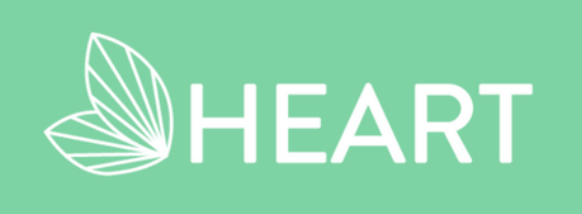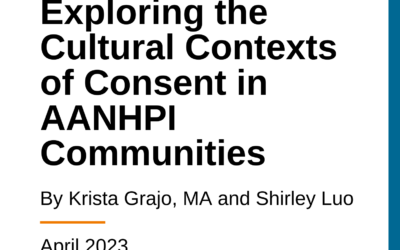Sexual Violence
For every actress hushed by a six-figure settlement, thousands more women are silenced by the threat of losing a minimum-wage job their families need to survive. Until we seek out their voices, and do the difficult and politically complex work needed to protect them, the #MeToo movement will look more like #WeFew.
Nell Bernstein: The floodgates aren’t open until working-class women tell their stories (2017, via Buzzfeed News)
Sexual violence is defined as any sexual act, attempt to obtain a sexual act, unwanted sexual comments or advances, or acts to traffic, or otherwise directed against a person’s sexuality using coercion, by any person regardless of their relationship to the victim, in any setting, including but not limited to home and work.
WHO: Violence against Women: Sexual Violence (2002)
Excessive restrictions designed to control female sexuality are used to label women’s sexual expression as transgressions, to justify victim-blaming, and to mask the high prevalence and incidence of sexual violence. In some Asian communities, violations can include being forced to watch and imitate pornography, denying the right to choose or express a different sexual orientation, forced marriage, child marriage, marital rape, ‘corrective’ rape of lesbians, body modification and humiliation, cyber-stalking, mass rape in conflict zones, and more.
I grew up in a home where we were taught valuable lessons about not wasting money, not wasting time, not wasting an education. I am left with a wasted childhood.
South Asian survivor of incestuous sexual abuse. The Children We Sacrifice, by Grace Poore (2000)
In private and public spheres, sexual violence is carried out with impunity, with appallingly low conviction rates for rapists. Women and girls are overwhelmingly targeted for sexual violence; but boys, men, and LGBTQ individuals are also victimized.
Quick Facts
- Of API women, 23% experienced some form of contact sexual violence, 10% experienced completed or attempted rape, and 21% had non-contact unwanted sexual experiences during their lifetime.
- Of API men, 9% experienced some form of contact sexual violence, and 9% had non-contact unwanted sexual experienced during their lifetime.
CDC: 2010-2012 NISVS State Report (2017) - 56% of Filipinas and 64% of Indian and Pakistani women had experienced sexual violence by an intimate in a study of 143 domestic violence survivors.
Intimate Partner Violence and Help-Seeking (2011) - Of 160 API-serving domestic violence programs surveyed, 69% report also addressing sexual violence/sexual assault.
A to Z Advocacy Model Report (2017)
Resources on Sexual Violence
#MeToo in Asia and API Communities
Celebrity Pakistani women add voices to #MeToo movement, CNN
China’s women break silence on harassment as #MeToo becomes #WoYeShi, The Guardian
Female journalists, male politicians and the epidemic of sexual harassment in Asean, Asian Correspondent
The floodgates aren’t open until working-class women tell their stories, Buzzfeed News
Hmong: #MeToo movement — An opportunity for Hmong women to advocate women’s rights, StarTribune
How did #MeToo start in Japan? These voices are planting small, yet powerful seeds of change, Bustle
#MeToo’s global impact: Big in some places, scanty in others, SF Gate
#MeToo in India: ‘Women’s rights need more than just a social media campaign,’ Deutsche Weller
The #MeToo movement in Asia: Is Singapore feeling the Weinstein effect? Forbes
The #MeToo movement looks different for women of color. Here are 10 stories, HuffPost
Exploring the Cultural Contexts of Consent in AANHPI Communities
AANHPI communities tend to be collective in nature, as well as hierarchical, to varying degrees. Both contexts complicate the concepts of consent and boundaries, especially for AANHPI youth and young adults, who often do not have opportunities to learn about the taboo...
Centering AANHPI Survivors: Recommendations for Campus and Title IX Administrators
This summary report lifts up the experiences and needs of Asian, Asian American, Native Hawaiian, and Pacific Islander students and staff who face dating and domestic violence, sexual assault, or sexual harassment on campus. While focused on experiences of survivors on college campuses, the findings and recommendations may also have implications for AANHPI students in the context of K-12 schools. Many thanks to the AANHPI survivors and advocates who were willing to share their experiences and insists with API-GBV!
Webinar for Advocates and Adult Allies! Sexual Harassment & AAPI Teens
Do you know what signs to look for and what steps to take if a teen or young adult encounters sexual or other harassment in the workplace? At the EEOC, we have seen that young workers at their first jobs can be especially vulnerable to harassment whether due to sex, national origin and other characteristics. Make a difference in the lives of the Asian and Pacific Islander teens and young adults you serve by learning how to recognize and refer cases, and understanding the role you can play to address workplace sexual harassment.
Presented by EEOC San Francisco. Hosted by API-GBV.
How To Make Sure Immigrant Women Aren’t Left Out of Me Too
We need policies that ensure that all workers, whether they are employees or contractors, have access to safety and justice in the workplace.

HEART Women & Girls
HEART Women & Girls promotes sexual health and sexual violence awareness in Muslim communities through health education, advocacy, research and training.
Visit their Resource Center for:
- Resources on sexual violence
- The Sex Talk: A Muslim’s Guide to the First Time
- HEART to HEART video series: conversations to break down the taboo of sex
Get Help
RAINN sexual violence hotline
800-656-HOPE (4673) | Online chat
U.S. Equal Employment Opportunity Commission: for information and to file a charge about sexual harassment in the workplace.
Sexual Violence in Asian and Pacific Islander Communities, 2018
Research and data on sexual abuse in Asia and in the U.S, community-specific abuse, child sex abuse, sexual abuse among young adults, and help-seeking & services.
Domestic Violence and Sexual Assault in the Pacific Islander Community, 2017
Erin Thomas, Asian/Pacific Islander Domestic Violence Resource Project (DVRP)
An overview of the geographical, historical, ethno-linguistic, and cultural diversity of Pacific Islander communities; historical trauma; and GBV trends.
Domestic and Sexual Violence in Filipino Communities, 2018
A compilation of statistics on domestic violence, sexual violence, stalking, and help-seeking in Filipino communities.
Sexual Violence Against Asian and Pacific Islander Women, 2011
Types of sexual violence, vulnerable women and potentially dangerous settings.
Community Survey Report on Sexual Violence in the Asian American/Immigrant Community, 2017
By KAN-WIN
This report shows the results of a survey that explored the prevalence of sexual violence in the Asian American/immigrant communities and barriers for survivors in accessing services.
Other Resources
Centers for Disease Control: The Lifetime Economic Burden of Rape among U.S. Adults (2017)
Center for Changing our Campus Culture: directory of national organizations dedicated to ending sexual assault on campus.
It’s On Us: a national movement to end sexual assault on college campuses.
National Organization of Asians and Pacific Islanders Ending Sexual Violence: technical assistance to culturally & linguistically specific organizations to serve API sexual assault survivors.
National Sexual Violence Resource Center (NSVRC): provides online modules, library, and other resources on preventing and responding to sexual violence.
Partners for Prevention: Why Do Some Men Use Violence Against Women and How Can We Prevent It? Quantitative Findings from the UN Multi-Country Study on Men and Violence in Asia and the Pacific (2013)

Standford rape survivor’s victim impact statement, and Vice President Biden’s response letter (2016) via Buzzfeed



